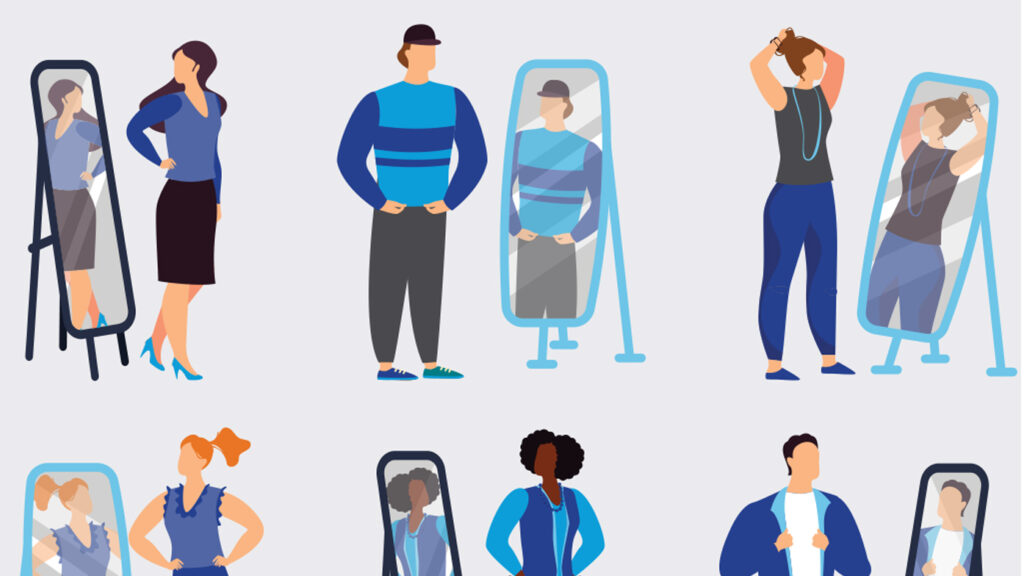The fitting room experience has always been a rite of passage for many, a tradition the pandemic all but eliminated with its contactless shopping options and free-for-all return policies. And that is all about to change. New technologies, like mirrors and self-checkout kiosks, use advancements in AI and machine learning to enhance the try-on experience for consumers by leveraging curated data input on the backend. Over 80% of retail executives expect their businesses to adopt artificial intelligence (AI) by 2025, with most citing reduced costs, personalized customer experiences and improved user experiences.
On my last trip to New York, I visited the Cos store in Times Square and had my first tech-enabled retail experience with a smart mirror. The sleek interface featured multi-touch options that allowed shoppers to choose a product SKU for trial and learn about its origin, price and store availability. Similar to the Uniqlo self-checkout kiosks, smart mirrors can read merchandise nearby. Virtual try-on technologies, powered by image recognition algorithms, assist customers with fashion styling on the store floor and in the fitting rooms. Pre-programmed to recognize product items, sizes and colors self-selected by consumers, they offer personalized styling recommendations, too. The mirrors take it one step further, using visual AI technologies, allowing consumers to complete purchases on-screen.
“Computer vision technology happens behind the scenes to enhance the consumer’s retail experience,” shares Rishabh Misra, an independent machine learning researcher.
Retail solutions enabled by computer vision technology include traffic flow patterns, dwell time, and, most recently, enhancing the in-store experience with fit assistance. With the addition of true fit sizing platforms, retailers have the opportunity to decrease the potential for returns while also building loyalty through personalized recommendations.
Misra consulted on ViBE, a VIsual Body-aware Embedding software that aims to dismiss the “one shape fits all” myth perpetuated by fashion retailers. The software takes anonymized data from retailers’ previous transactions and feedback about sizing. The API then takes this information and matches it against a curated data set that might include age, gender, body measurements, past purchases, and fit feedback to account for size variation. “As an example, a Women’s-Medium at H&M may not be equal to a Women’s-Medium at Zara. The algorithm helps the consumer determine whether or not they need to size up or down,” he explains. The aggregated sizing data creates a universal pool of intelligence that helps consumers make informed purchasing decisions.
 Anjee Solanki
Anjee Solanki
“The digitally enabled retail experience isn’t limited to high-tech platforms in-store. Some initiatives are leveraging a more widely adaptive tool, the mobile phone.”
The digitally enabled retail experience isn’t limited to high-tech platforms in-store. Some initiatives are leveraging a more widely adaptive tool, the mobile phone. Minus 28 is one such application that hopes to make shopping hassle-free. Sarah Rahman, Head of Fashion Marketing, explains, “On average, a woman dedicates 28 hours of thought a month to her appearance while only using 20% of her closet. With 28, shoppers receive tailored outfit suggestions based on personal preferences, comparing items in-store with those existing in the user’s closet.”
Minus 28 subscribers customize an avatar to their likeness from shape to skin tone and then, using the app’s AI camera, snap and save pieces from various stores. “It’s as close as you can get to wearing the item,” shares Rahman. “Our Virtual Tryon feature allows the consumer to try up to five items from a store or brand, view them collectively before they commit to purchasing, and ultimately, make better decisions.”
Lingerie brand Savage x Fenty is taking digitization up a notch, implementing AR technologies to redefine the fitting room experience. In its most recent partnership with FIT:MATCH and Intel, brand shoppers can submit to a body scan for stylized recommendations based on the accuracy of the reading. From the virtual try-on experience to delivering goods, digitization allows retailers to reinvent the shopping experience to one smartly tailored to the individual.




 Aaron Jodka
Aaron Jodka